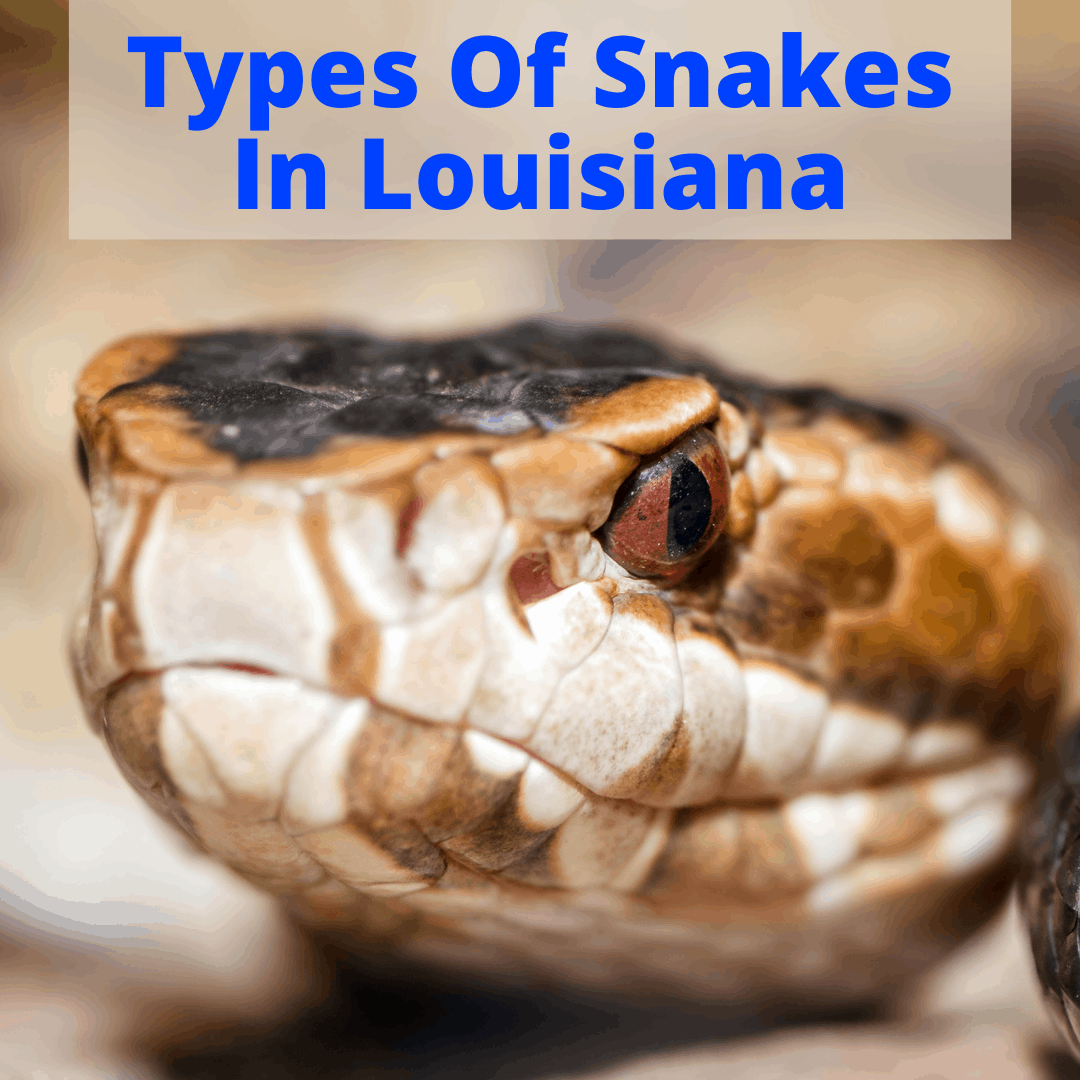
Louisiana has swamplands, so you know it has snakes, too.
And you know at least some of those snakes are venomous.
Well, you won’t learn anything surprising here today, in that regard.
Louisiana is indeed home to many species of snakes, including 7 venomous species.
Let’s take a look at the different types of snakes found in the Pelican State, so you know exactly what to expect.
Table of Contents
Types Of Snakes In Louisiana
As mentioned, there are many types of snakes in LA (at least 46). Seven of those species are venomous, though most are not life-threatening.
Poisonous Snakes In Louisiana
First, let’s dive into the poisonous snakes in Louisiana (yes, I know it should be “venomous”). If your new slithering friend shows up on this list, keep a snake-length distance away from it.
The Cottonmouth Snake
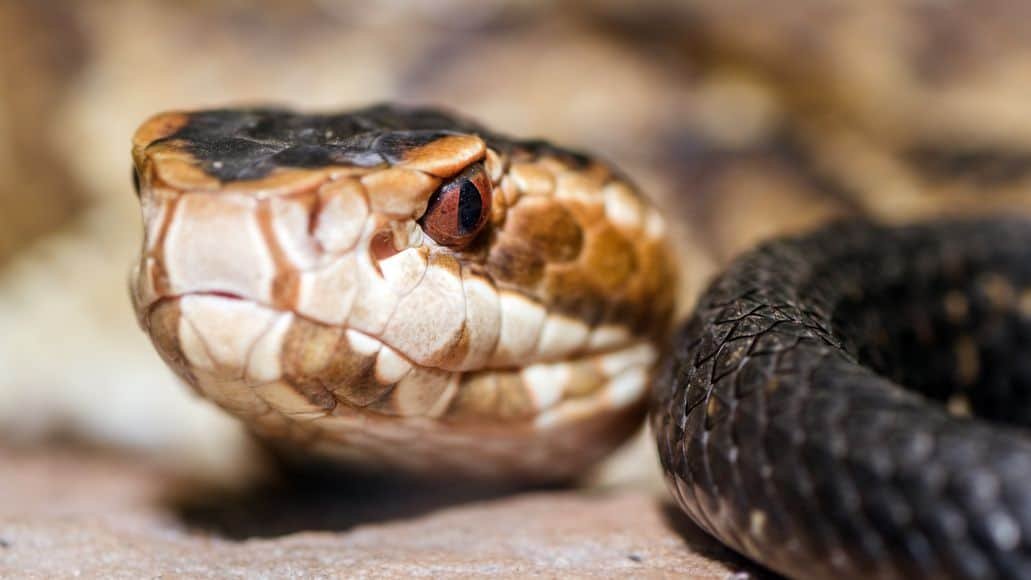
I assure you, the inside of this snake’s mouth is not fluffy cotton. But it is stark white. The Cottonmouth likes to open its jaw wide to scare off threats. Hence the cottonmouth name.
One of seven venomous snakes in Louisiana, the Cottonmouth easily leads the den as the most legendary. This snake is about three feet long on average but can grow up to six feet.
The Cottonmouth Snake can be found either in or near water, feeding on fish, small turtles, frogs, and other adorable water-side creatures.
To add to the venom (which can cause harm but rarely death), the Cottonmouth also likes to whip around its tail if it feels threatened and. As a special treat, it can also let loose a skunk-like spray.
Cottonmouths are fabulously camouflaged, sporting a becoming tan or brown color, with white stripes around their jaws.
If your crossword clue is an 11-letter word for ‘popular venomous snake,’ this is likely your winner. Like the next three species on this list, the Cottonmouth is also one of the most common snakes in Mississippi.
The Copperhead Snake
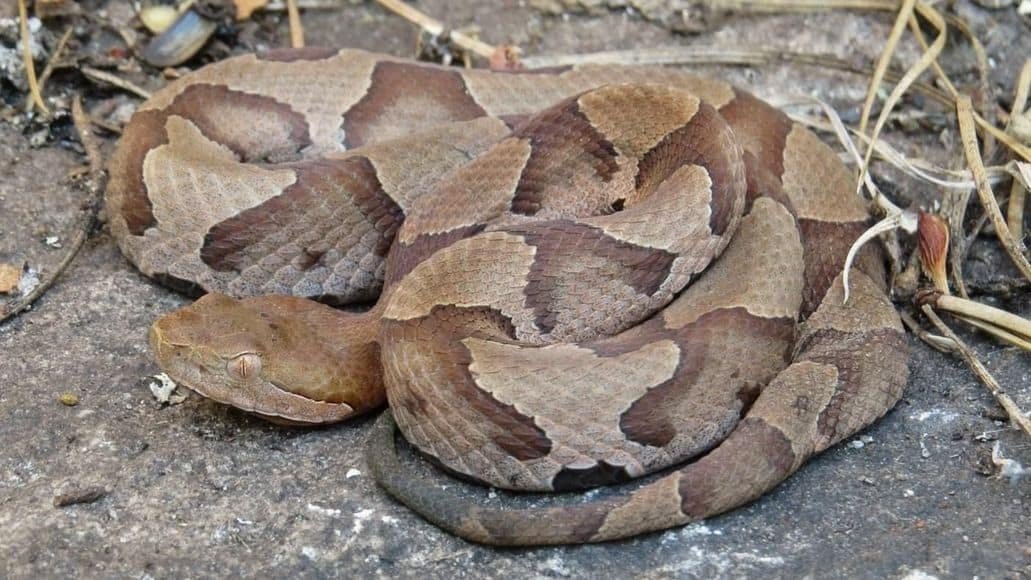
Despite impressive camouflage among dry leaves and branches, the Copperhead is still a very recognizable snake. It has bands of ruddy brown crossed with white or tan.
If your teacher asked you to draw a snake, it would likely look like the Copperhead.
Younger Copperheads have bright yellow tails that they use to lure small animals, which then become delicious appetizers. This tail helps immensely in identifying baby copperhead snakes.
Slithering into the ring at about three feet, the Copperhead snake does have venom in its fangs. Can copperheads kill you? They can, but copperhead bites are rarely fatal.
Their venom is not especially powerful and they don’t inject a ton of it. But you’ll still need antivenom to prevent tissue damage. This snake is also more hesitant than the confident Cottonmouth, so it will only deliver a bite if it feels it has no other option. Any many copperhead bites are dry, i.e. they inject no venom.
The Copperhead has been found in forests, near water, and in rocky areas, so this friend can show up anywhere. Beware, and wear boots.
The Pygmy Rattlesnake
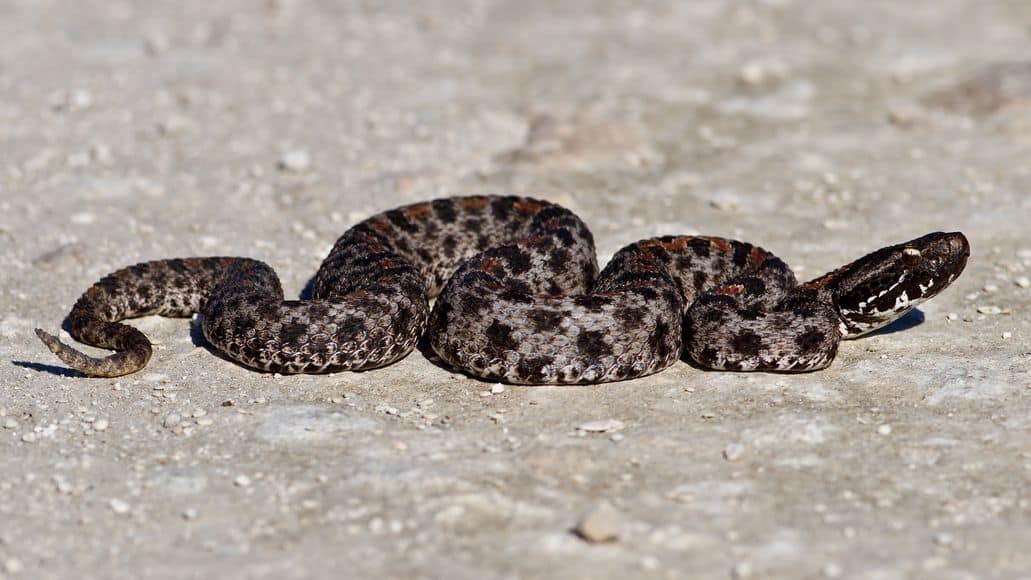
You may have guessed from the name, but the Pygmy Rattlesnake is the smallest of the poisonous snakes found in Louisiana, gliding into the list at an arm’s-length foot and a half.
The Pygmy Rattlesnake can be identified by its striking grey or silver coloring, with two rows of black spots and sometimes a fashionable stripe of orange to add some flair.
This rattler lives on a typical diet of mice, frogs, lizards, and other creatures found on the forest floor menu. Babies can hunt immediately after their first shed and mothers look after them until then. Rattlesnakes do not nurse their young, as some people believe, for some reason.
The Pygmy is a pit viper subspecies, meaning it has heat-sensor pits on its head, allowing it to sense and attack prey without seeing it.
The Eastern Diamond Rattlesnake
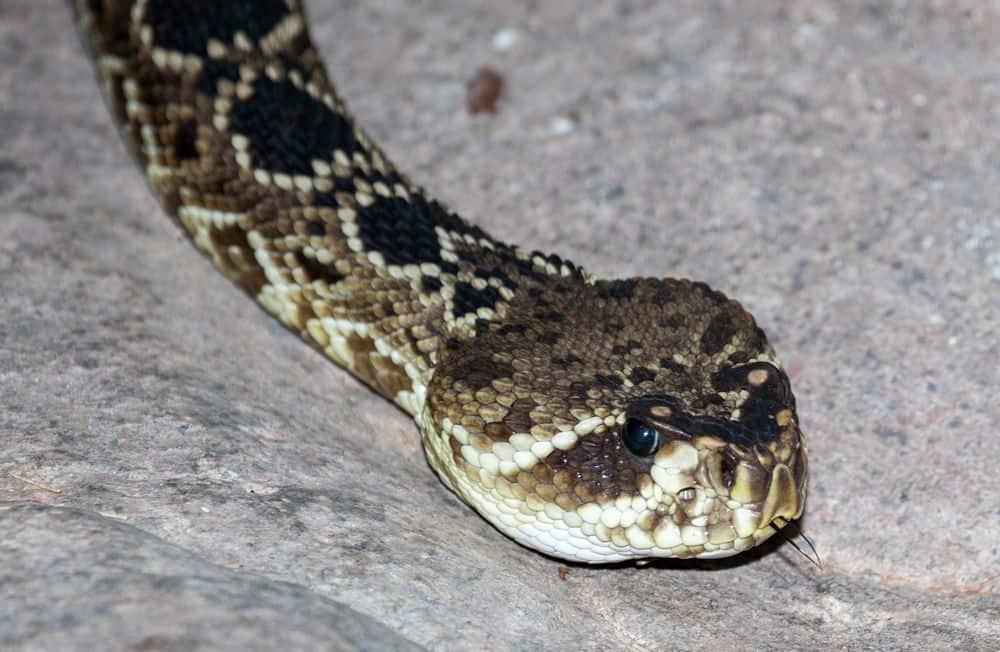
This snake is no joke. It’s heavy, it’s long, and it doesn’t like you. The Eastern Diamond Rattlesnake is rarely seen and is high on the endangered list, but you will be too if you run into it.
The diamond name refers to the pattern on its scales: a base tan color with brown or black diamonds symmetrically down its four to seven foot length (that’s longer than your living room curtains!).
This snake has the characteristic triangular head that is one way you can tell if a snake is poisonous.
I won’t go into the details of what the wound would look like if this king of rattles bites you, in case you’ve just eaten. Just take a picture with a long lens, and leave asap.
The Texas Coral Snake
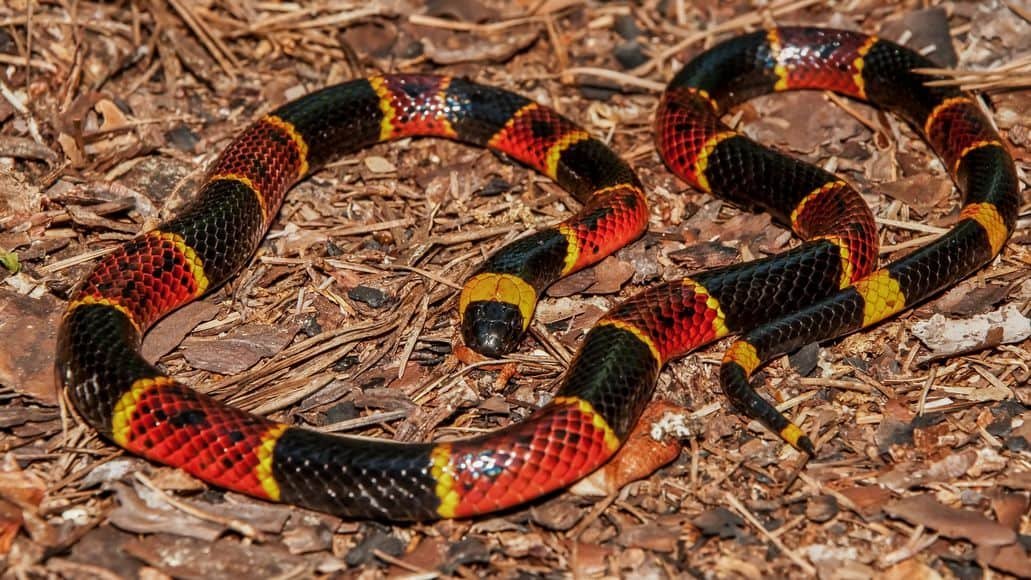
Why is there a Texan on this list? Because this stripey guy has slithered his way right into Louisiana. Often seen wearing a cowboy hat and stars… wait, that’s not right.
But the Texas Coral Snake is almost as easy to recognize with its red, black, and bright yellow stripes.
Do you know that rubber snake you used to throw at your sister to make her scream? It was probably based on the Texas Coral snake. Please don’t try it with this one.
Thankfully only about two feet long, this Texan’s bite may not kill you, but it will mess up your muscles and nervous system and land you in the hospital. It also moves unpredictably, so, personally, I’d keep my distance.
The Canebrake Rattlesnake
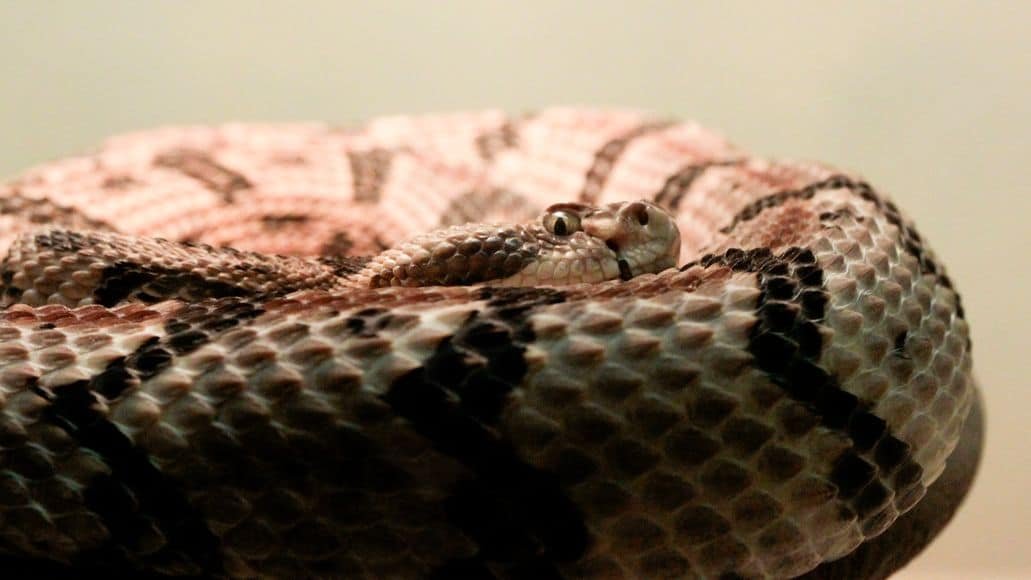
The penultimate poisonous snake on our list checks off two boxes: it is the most common rattler in Louisiana, and it’s also the most dangerous.
The Canebrake Rattlesnake averages a decent four to eight feet in length and can weigh between five and ten terrifying pounds.
Birds, mice, rabbits, and other snakes are all on the Canebrake menu, and it likes tree hollows, forest floors, and marshes. It can have a deep “V” or “M” pattern down its back, usually in browns and black.
While the Canebrake Rattlesnake has a frightening amount of toxic venom in its long fangs, this rattler will kindly give you lots of warning before it strikes. Heed that warning and back away from this nightmare as quickly as you can.
The Harlequin Coral Snake
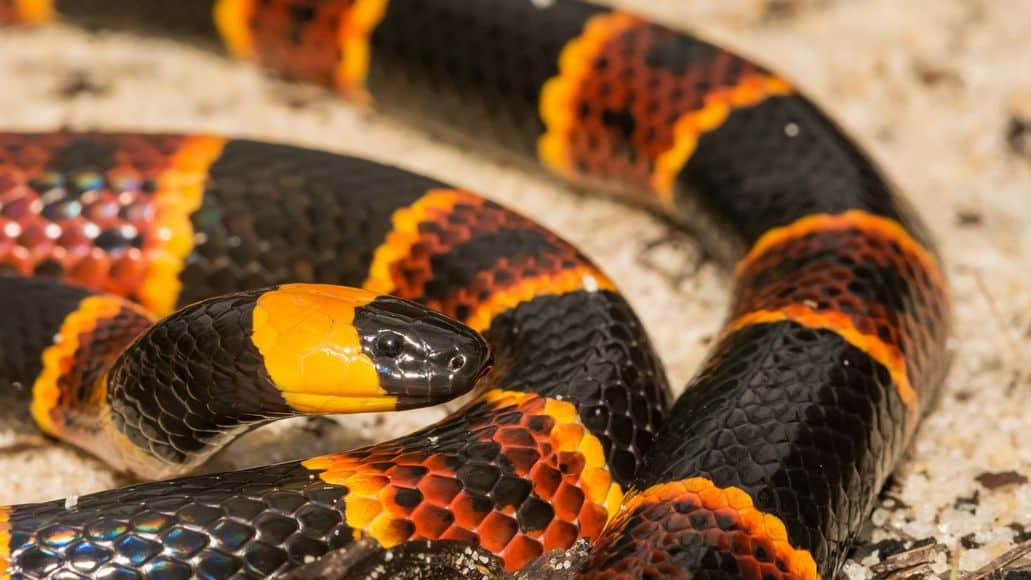
The last poisonous snake on our list is the romantically-inclined Harlequin Coral snake. I’m just kidding; this snake is typically non-aggressive, but please don’t try to take it for long walks on the beach.
Approximately three feet in length, the Harlequin Coral sports identifiable black and yellow stripes. Overall, this snake has to try a lot harder if it wants to earn a scarier reputation. There is venom in its bite, but it’s weak, and the Harlequin Coral snake prefers to slither away over attacking.
Non Poisonous Snakes In Louisiana
And now we move to some of the non-poisonous types of snakes in Louisiana. With these you don’t have to worry about losing life or limb. At least not life.
There are many, many snakes found in the Pelican State that are non-poisonous. Here are seven of the most common slinkers.
The Coachwhip Snake
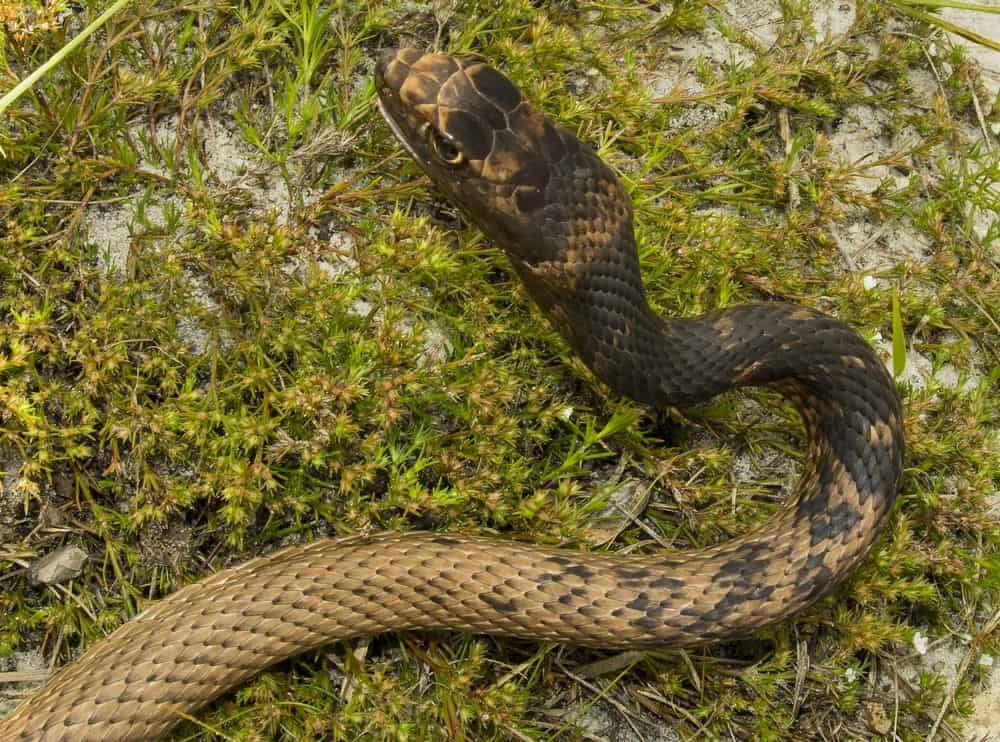
Named for its braided look, the Coachwhip Snake can be found in Northern and Central Louisiana. It prefers dry land, like open forest floors.
It can climb trees and will attack if it feels cornered. Please don’t corner it. It is one of the most common snakes in your backyard.
The Eastern Hog-Nosed Snake
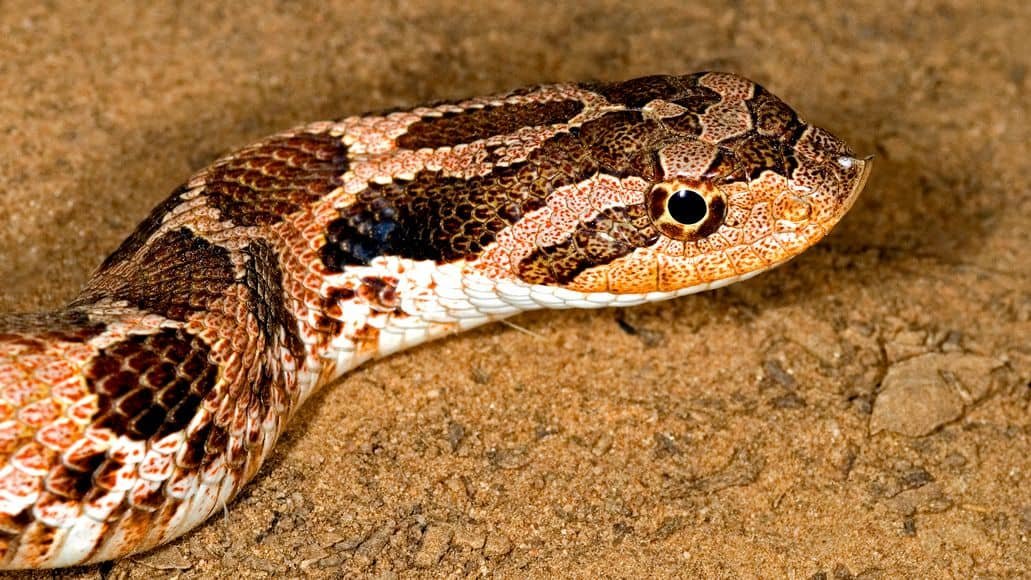
The Eastern Hog-Nosed Snake can be tricky to identify as they can sport spots, stripes, or a fashionable checkered look.
The Hog-Nose Snake can be up to three feet in length and has a tiny version of the upturned snout found on a pig. This snake likes to burrow in soil and dry areas but can also be found near swamps and shorelines to keep you on your toes.
Like a possum, this snake’s first defense is to play dead if it feels threatened.
The Scarlet Kingsnake
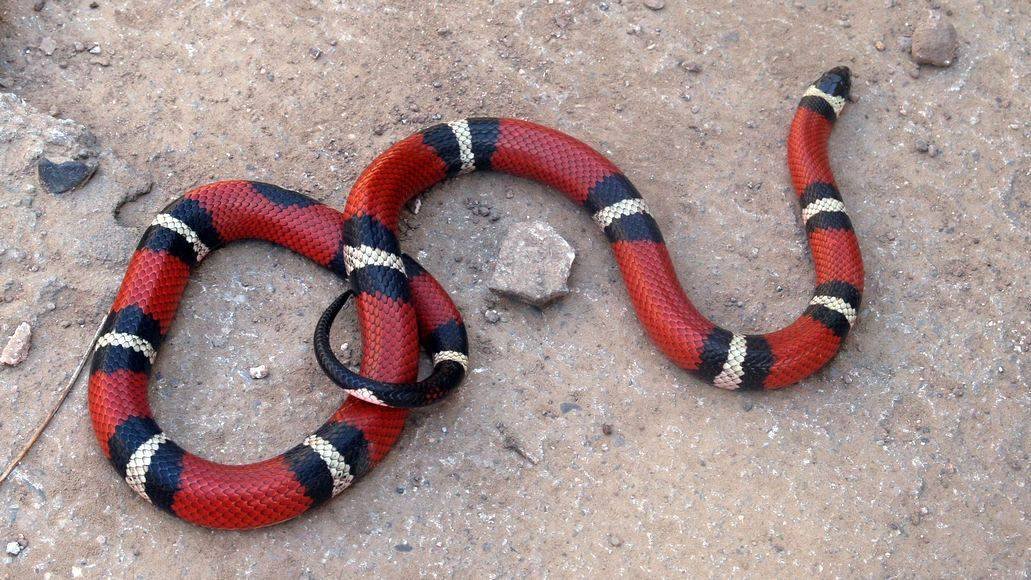
If there’s a snake pageant, this might be the contestant you want to back. The Scarlet Kingsnake has smooth red scales with white stripes and is under a dainty two feet in length.
Though an accomplished swimmer, the Scarlet Kingsnake will mostly stay on land and loves to glide around at night.
The Mud Snake
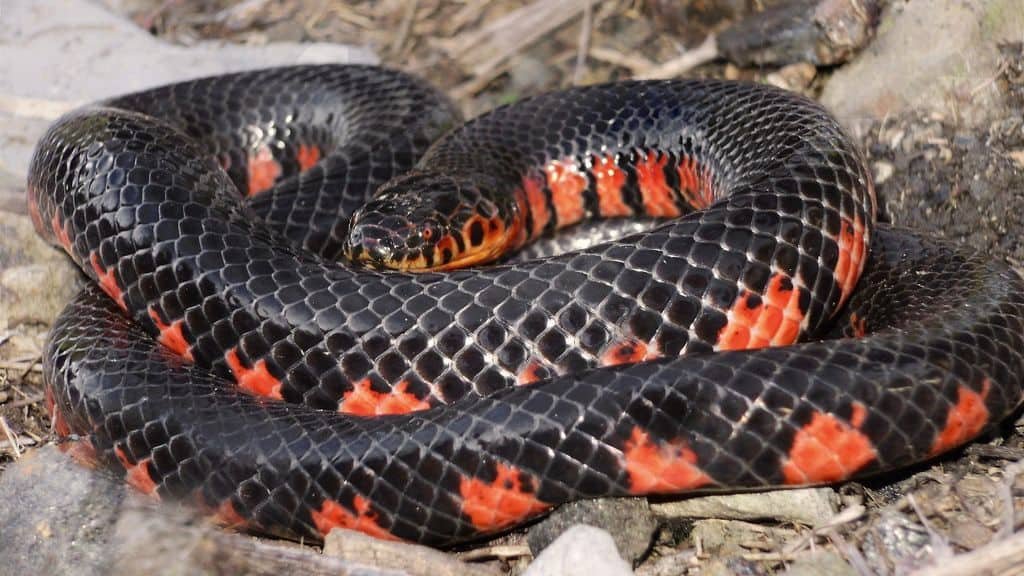
You’d assume that the Mud Snake would be mud-colored, but you’d be wrong. In fact, it has a vibrant red underbelly and a smooth black back.
But it just loves slithering through the mud. Ditches, wetlands, marshes – these are all favorites of the Mud Snake.
The Mud Snake is common, though it can be hard to see in the thick of mud. Unlikely to bite (and non-poisonous if it does), it might try to coil itself around you, so that’s just as fun.
The Banded Water Snake
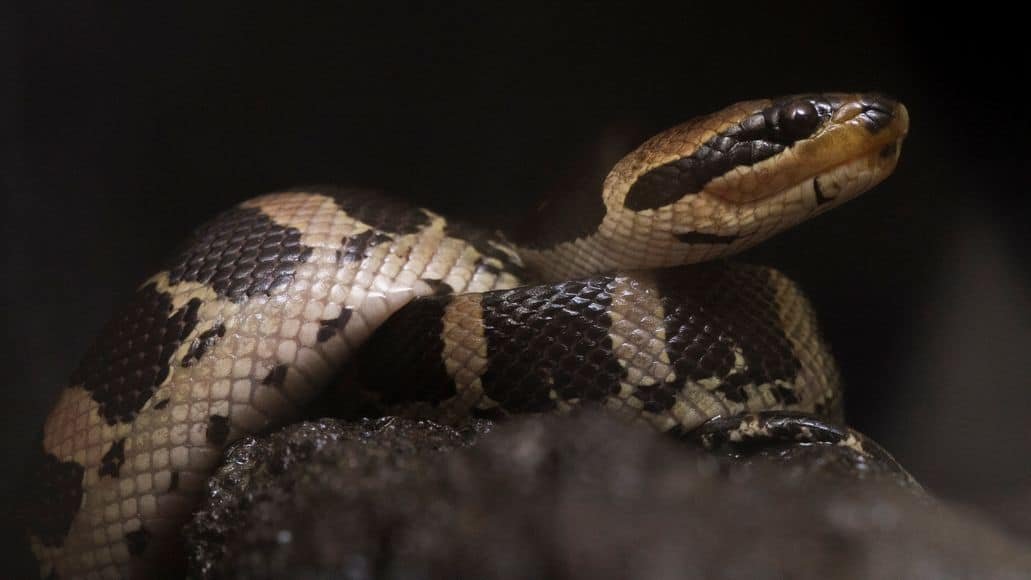
Found around the edges of swamps and reveling in brackish water is the Banded Watersnake, also known as the Broad-banded water snake. It measures between one and two feet in length.
It is strict with sticking to a seafood diet, sprinkled with some helpings of frogs and other water-side creatures. Their distinctive underside is white with red or black spots, and their back is dark with a crossbar pattern.
The Ring-Necked Snake
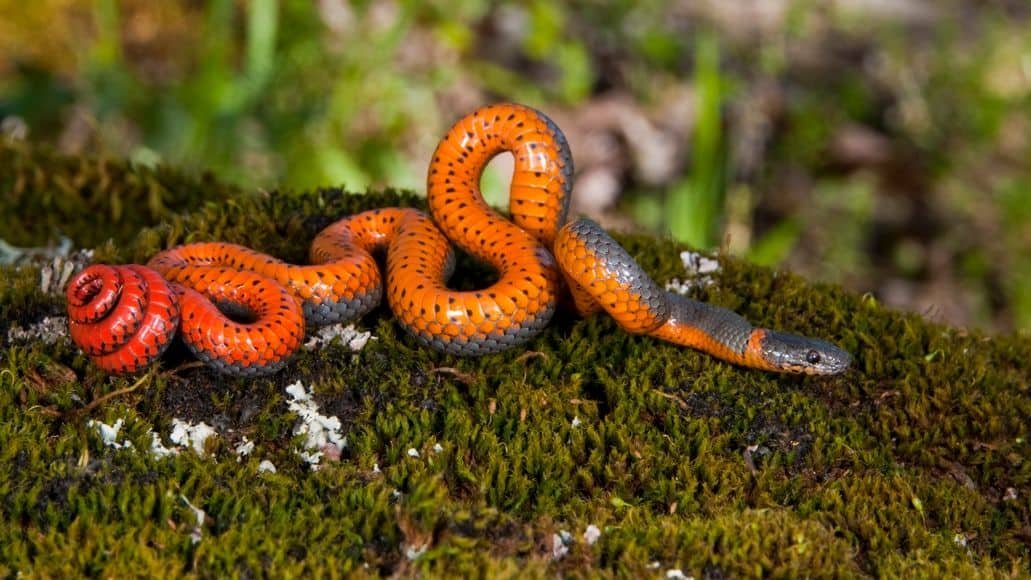
Finally, a name that makes sense! The Ring-Necked Snake truly does have a ring around its neck. And it may be the only coloring that you spot on the generally muddy scales.
This snake is not a socializer and prefers to be alone. Only growing to just about a foot in length, the Ring-Necked Snake is fond of slugs, worms, and small creatures.
The Racer Snake
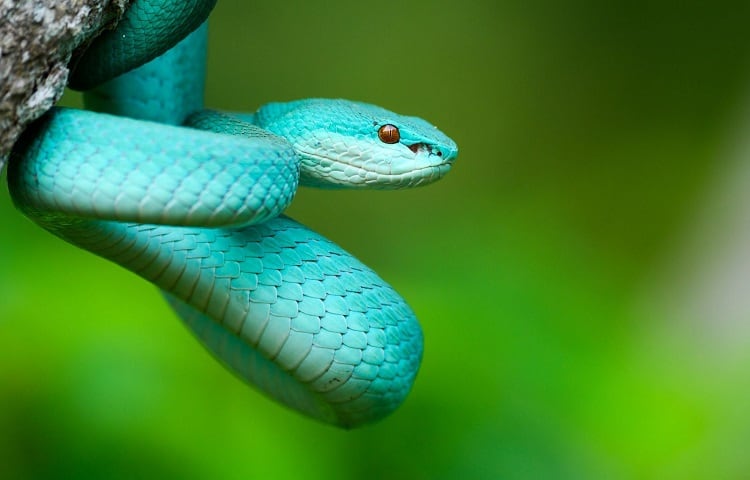
We’ll finish our list with a snake that can move terrifyingly quickly. The Racer Snake, also called a ‘runner,’ is from the Cobra family, though it doesn’t tend to coil to kill prey. If it feels threatened, it can swim, climb and slither at shiver-inducing speeds.
While they are non-venomous, they will bite hard and often, if they need to. They can be tricky to handle and do not generally make great pets.
In length, the Racer Snake can be from two to four feet. Their scales are more matte than shiny and nearly black. But there are beautiful colored variants as well, like the green racer or the blue racer pictured above.
They prefer dense wooded or grassy areas. Despite being a slimmer snake, they have a big appetite for mice, moles, and other creatures that can ruin a perfectly nice garden.
Louisiana Snakes: Final Thoughts
It should come as no surprise that Louisiana is home to many species of snakes, including a good number of venomous ones.
You may have noticed a complete lack of sea snakes. That’s because there are no sea snakes in the Gulf of Mexico whatsoever.
As always, if you come across a snake, give it space and leave it alone. Unless you are an expert, there is no reason for you to interact with any snakes.
And you definitely don’t want to pose for selfies with one (seriously people do this!) Even if this article has helped you identify the snake you’re seeing as harmless, leave it be anyway.
If you’re curious about other states, we also have an article entitled “Are There Poisonous Snakes In Maine?” and another one discussing poisonous snakes in Wisconsin.
Bob Putfark says
Thank you for this information. I live in Big Branch, Louisiana and discovered a large (30 to 36″ and 2 to 3″ diameter) snake in my driveway last week. It was very dark with chevrons on it sides and a broad scarlet stripe down the center of its back beginning behind its head. It was not aggressive and moved into the underbrush when I nudged it with a stick.
I have lived here 35 years and never seen another snake like this here, nor anywhere else I’ve lived in Louisiana nor south Texas.
Any idea what it might be? If I see it again, should I capture or destroy it or let it be?
Thank you again.
Kecia Nugent says
What about the chicken snake?
Gordon Wilson says
It crossed the road.